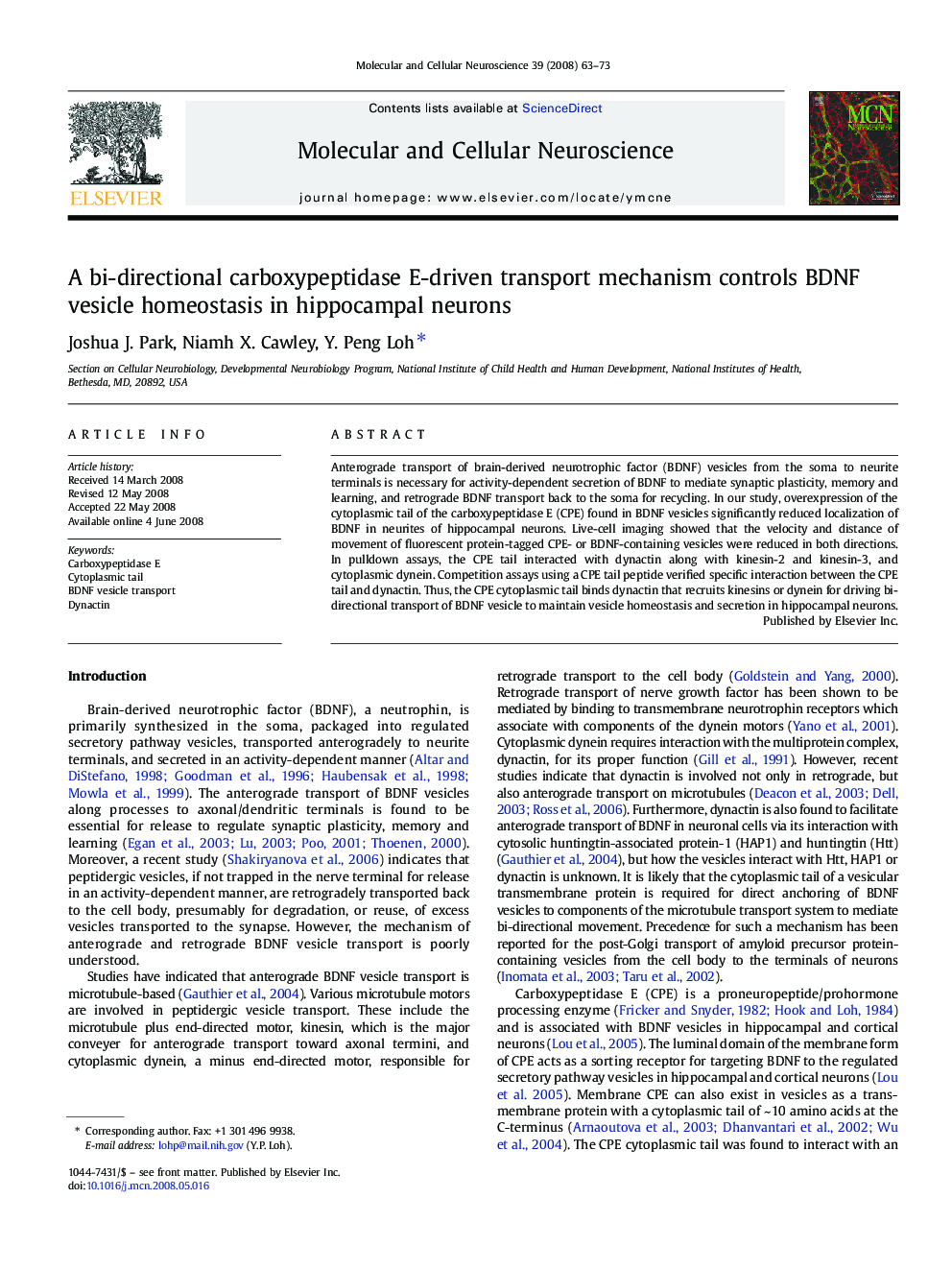| Article ID | Journal | Published Year | Pages | File Type |
|---|---|---|---|---|
| 2199002 | Molecular and Cellular Neuroscience | 2008 | 11 Pages |
Anterograde transport of brain-derived neurotrophic factor (BDNF) vesicles from the soma to neurite terminals is necessary for activity-dependent secretion of BDNF to mediate synaptic plasticity, memory and learning, and retrograde BDNF transport back to the soma for recycling. In our study, overexpression of the cytoplasmic tail of the carboxypeptidase E (CPE) found in BDNF vesicles significantly reduced localization of BDNF in neurites of hippocampal neurons. Live-cell imaging showed that the velocity and distance of movement of fluorescent protein-tagged CPE- or BDNF-containing vesicles were reduced in both directions. In pulldown assays, the CPE tail interacted with dynactin along with kinesin-2 and kinesin-3, and cytoplasmic dynein. Competition assays using a CPE tail peptide verified specific interaction between the CPE tail and dynactin. Thus, the CPE cytoplasmic tail binds dynactin that recruits kinesins or dynein for driving bi-directional transport of BDNF vesicle to maintain vesicle homeostasis and secretion in hippocampal neurons.
